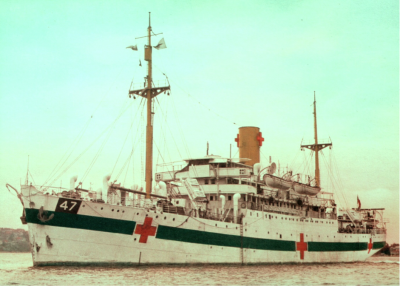New Zealand born Ian Rhodes entered the Royal Australian Naval Volunteer Reserve as an ordinary seaman under the British Admiralty’s yachtsmen scheme.
Immediately posted to Britain for further training, he joined the destroyer HMS Kashmir on 1 April 1941 and in the following month took part in the Royal Navy’s attempt to prevent a German seaborne landing on Crete.
On 23 May Kashmir came under air-attack while returning to Egypt to refuel. Hit amidships by a bomb, she broke in two and began to sink rapidly.
When a German bomber machine-gunned both the rear section of the ship and members of her crew who were struggling in the sea, Rhodes left the port Oerlikon gun (on which he was the gunlayer) as the water rose around it and climbed to the nearby starboard gun.
Turning this weapon against the attacking aeroplane, he shot it down in flames. Rhodes was taken to Alexandria in HMS Kipling, his only possessions a pair of shorts and a borrowed cap.
He won the Conspicuous Gallantry Medal, the highest decoration—next to the Victoria Cross—which could be awarded to naval ratings. No other Australian sailor received this decoration in World War I or II.
Rhodes was commissioned on 22 January 1942 and promoted provisional lieutenant in August. Joining the cruiser HMS Sheffield on 10 April, he served in the Atlantic and Arctic oceans, escorting convoys en route to Russia.
In March 1943 he was transferred to the cruiser HMAS Shropshire which was then being commissioned in England. He remained with the RAN cruiser until July 1944, winning favourable regard as a ‘keen and capable’ officer.

